Fenway Center treasures undergo renovation, draw attention to its history and American stained glass tradition
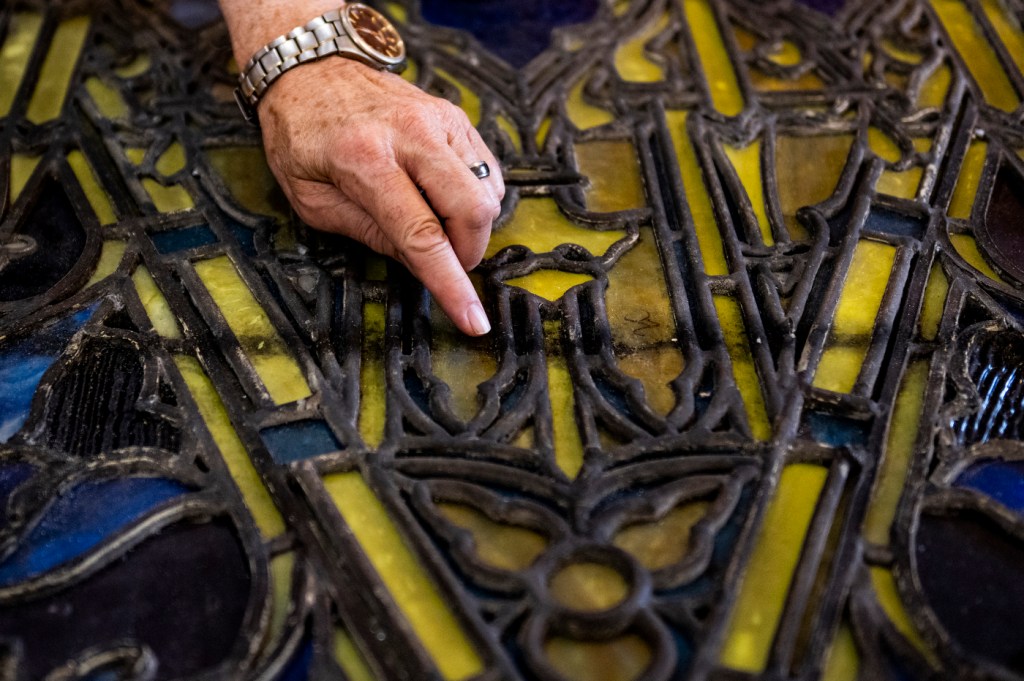
On the northern edge of Northeastern’s campus in Boston, on a quiet street shielded from the bustling Huntington Avenue sits a yellow-brick, Gothic church with a brownish-red arched front door known to the Northeastern community as the Fenway Center.
Above the door rises a big, arch-shaped stained glass window with white lace-like grills. A similar, but more intricate window can usually be found on the other side of the cross-shaped building, above the altar, but is currently replaced by plywood.
“These are hidden treasures of Boston,” says Lyn Hovey, a world-class stained glass specialist, whose studio has done the restoration work on the window above the front door and is currently restoring the altar window.
Although the church, which is located at 77 St. Stephen St. and now used by Northeastern for events, is comparatively small, Hovey says, its windows are unique. They represent the rise of stained glass art in the U.S. in the end of the 19th century and the beginning of the 20th century and a transition from medieval techniques to innovative methods and materials introduced by such artists as John La Farge and Louis Comfort Tiffany.
“The rumor is that [the nearby] Saint Botolph Street and the surrounding area was like the stained glass art row,” says Brian Aguiar, a project manager at Northeastern’s planning, real estate and facilities department, working on the Fenway Center with Hovey.
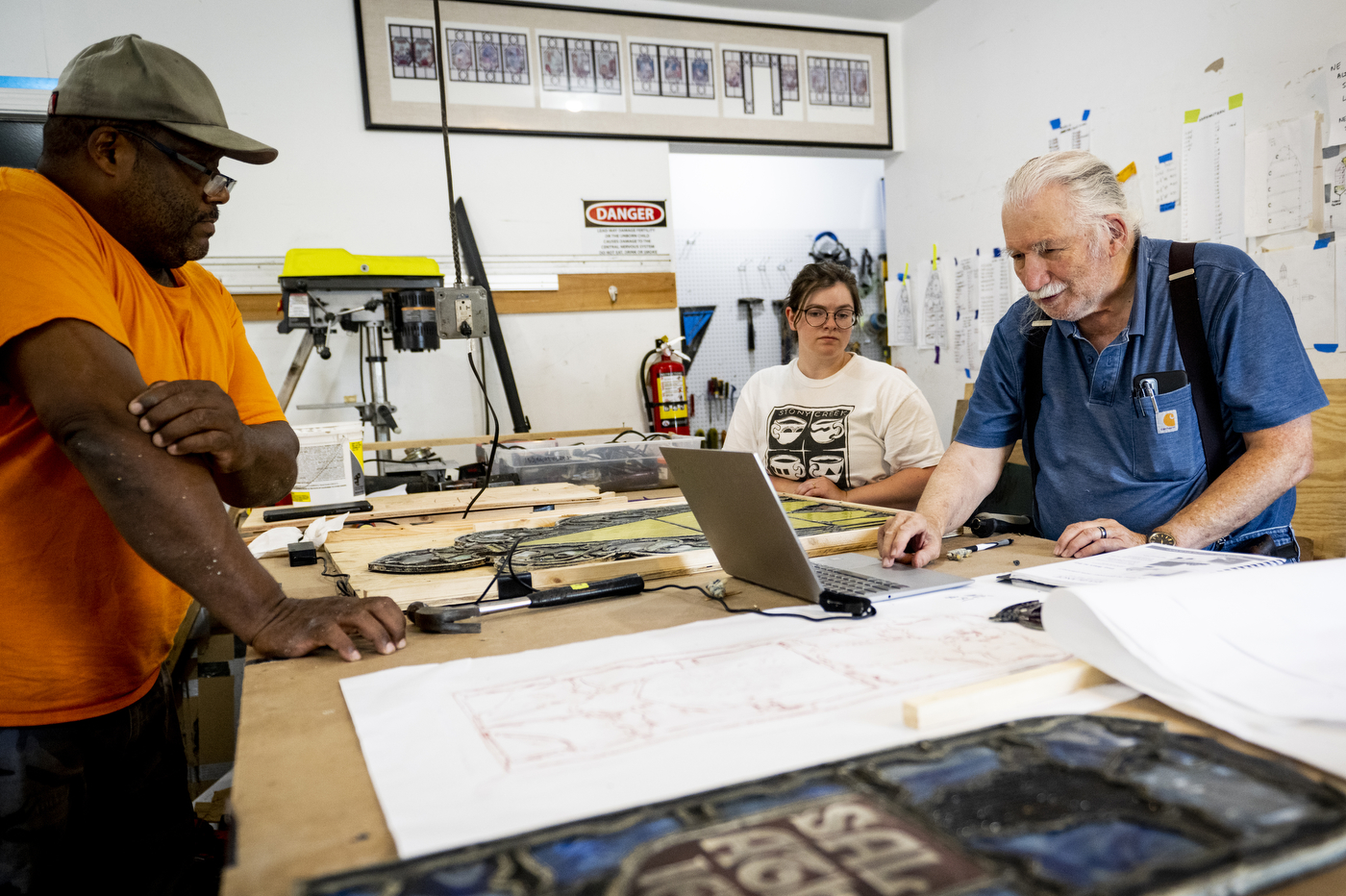
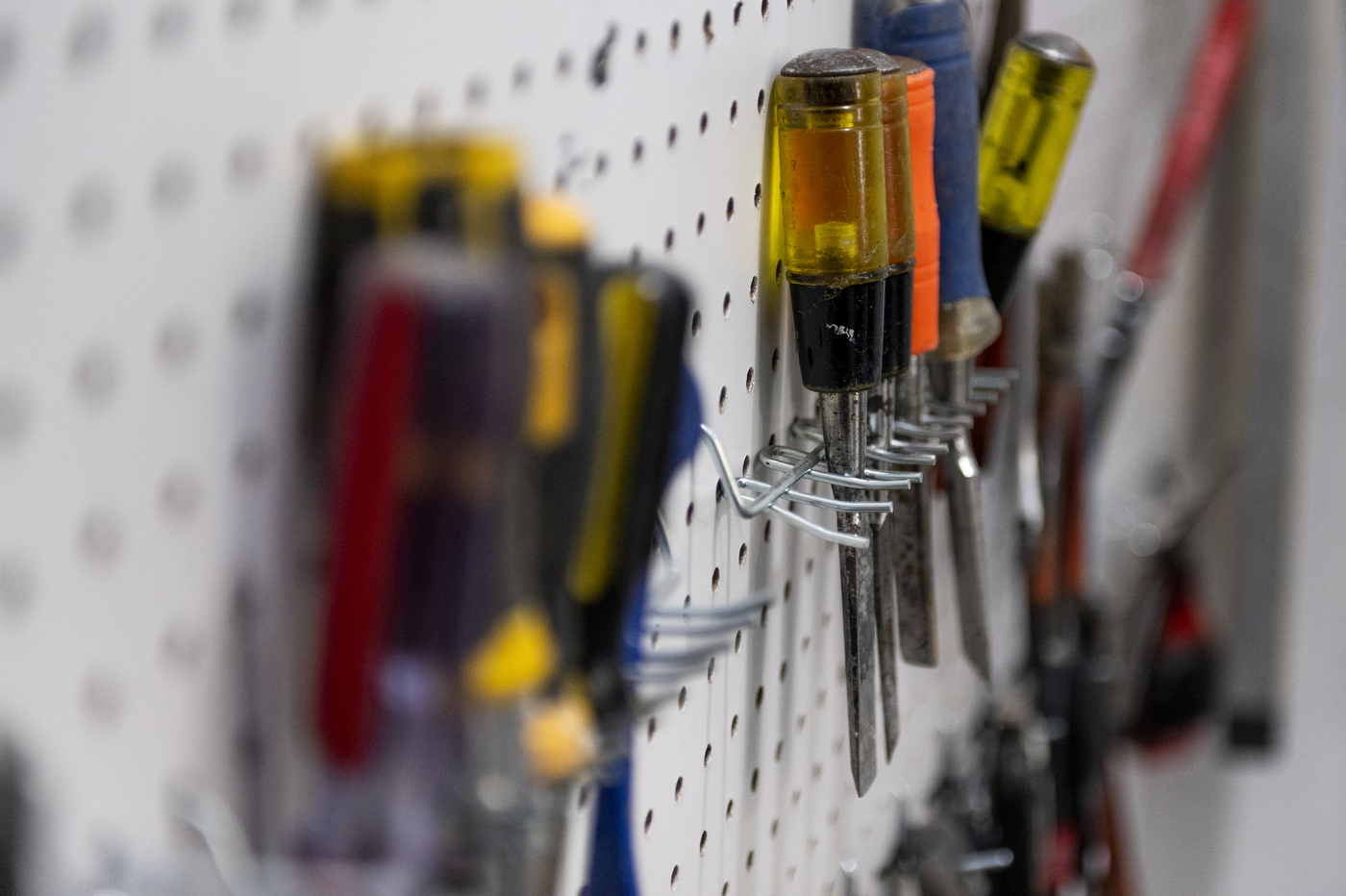

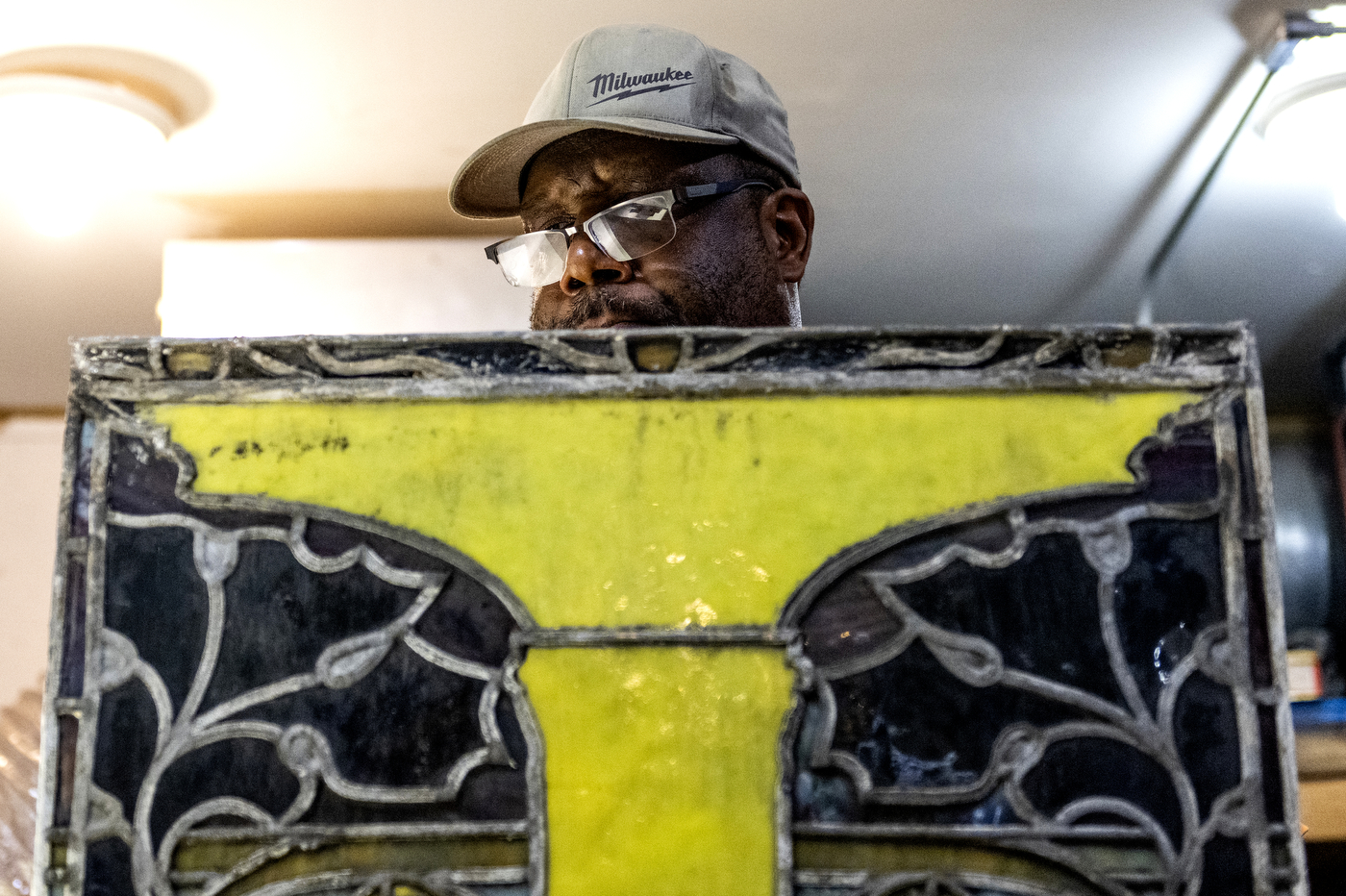
When dismantling the windows, Hovey’s team noticed that different panes might have been made by different artists who somehow worked on the windows as a team.
“And everyone was trying to basically show off their skills and do different things,” Aguiar says. “That’s how you got some very intricate, amazing windows on such a small church.”
A prominent Boston architectural firm, Rotch and Tilden, built the church in a late Victorian Gothic style between 1890 and 1892, according to the Massachusetts Historical Commission. Initially a Protestant church—the Episcopal Church of the Messiah—it was purchased by the Catholic Church in 1928 and converted into St. Ann Roman Catholic Church.
In 1945, the Missionary Society of St. Paul, also known as the Paulist Fathers, took over St. Ann’s, and it became its own parish.
St. Ann’s quickly became known as Boston’s “University Parish,” ministering not only to the Back Bay population, but also to students from nearby Northeastern, Wentworth University of Technology, Massachusetts College of Art and Design, and Simmons College and from across the city.
At its height, St. Ann’s offered seven Masses on Sundays, eight on Holy Days and additional Masses in the church basement. As the residential population declined, the Paulists withdrew, and the Archdiocese closed the church in 2005 due to the financial strain caused by the sexual abuse scandal.
St. Ann’s required more than $1 million worth of repairs, but in 2006 Northeastern acquired the church, which saved it from being demolished and turned into housing. The building now serves as a performance center, hosting many functions like music and dance performances, lectures by the world leading experts, exhibitions and the Northeastern’s Catholic Center’s church services on Sundays.
The building underwent major renovations, and the windows restoration was next on the list.
“When we began the [window] restoration projects for the Fenway Center in the beginning of 2019, Lyn Hovey was the university’s first and only choice,” says Jean-Michel Ake, an assistant project manager.

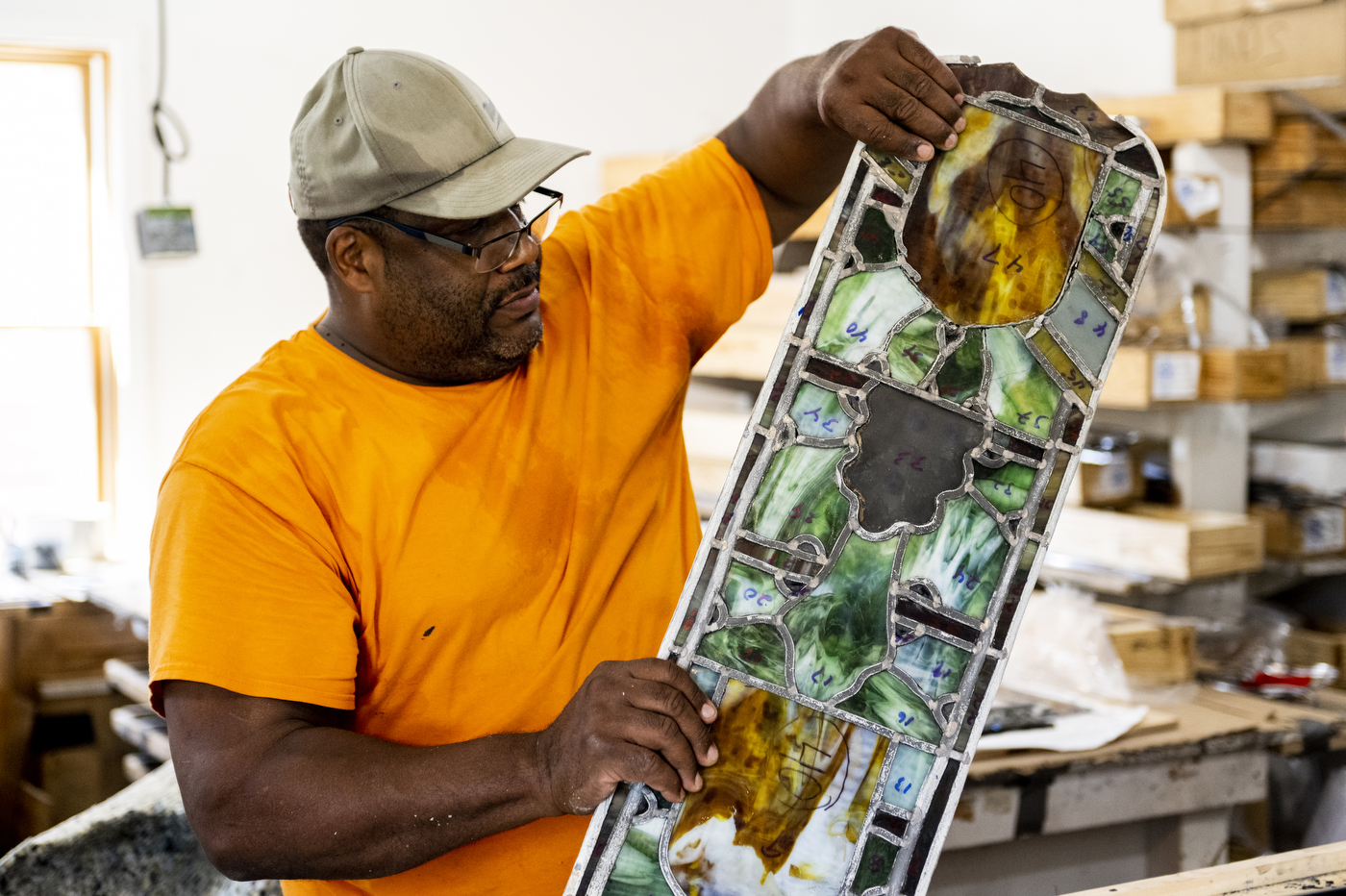
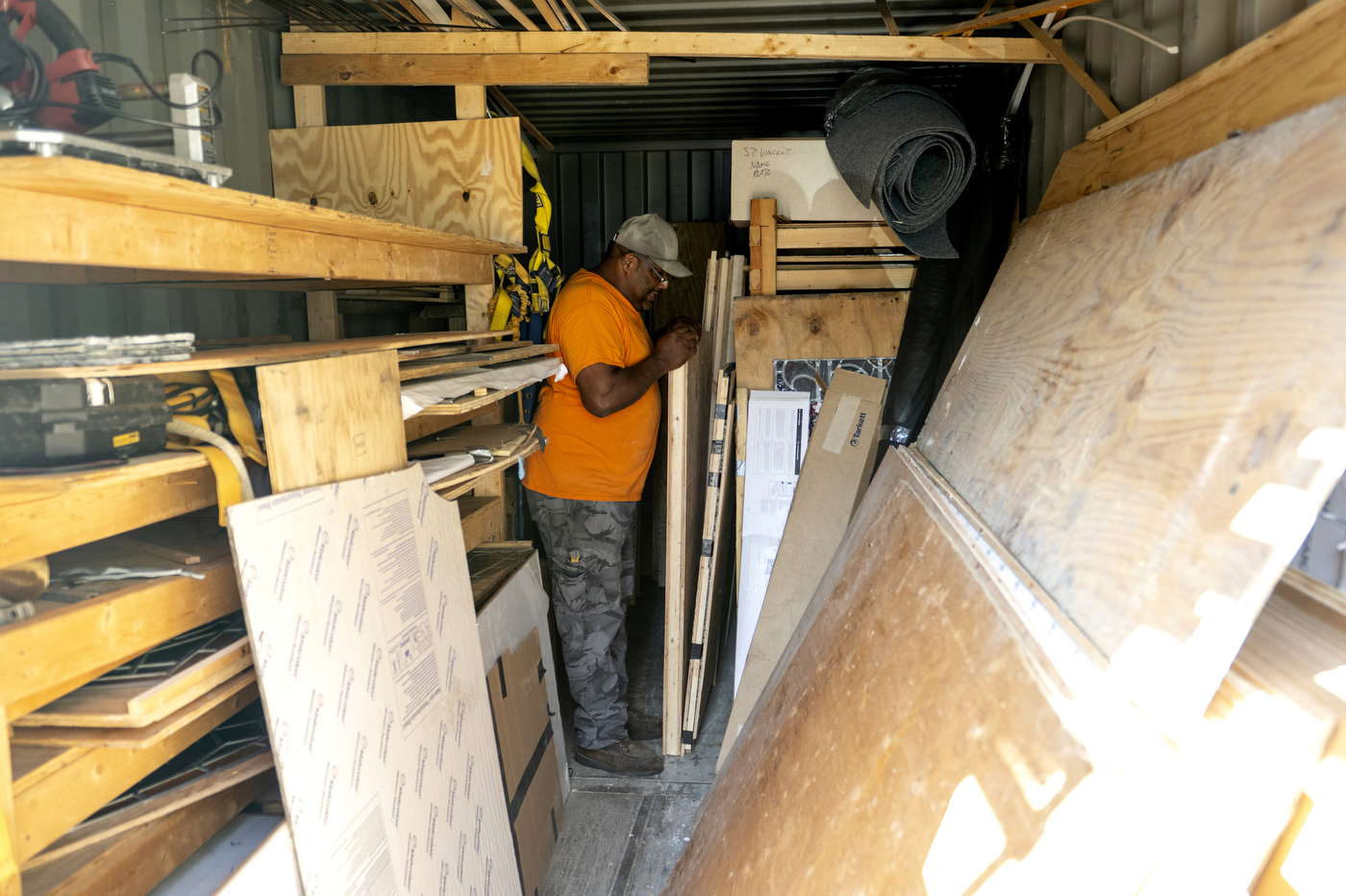

Hovey, whose studio is located in Codman Square in Dorchester, has been working in stained glass for more than 50 years and has completed many projects both for the Boston’s Archdiocese and internationally.
Boston has a rich stained glass tradition, Hovey says, which was closely tied to religion and churches. The faithful who donated for stained glass windows were often featured on the front pages of local newspapers.
The Fenway Center window above the altar was made at a time when stained glass artists were in competition with each other to do the most daring, cutting-edge work.
“This window was exploratory, one of a kind,” Hovey says. “Other windows at the Fenway Center are more straightforward.”
Jeffrey Cruse, a master woodworker, a master glazier and Hovey’s studio’s leader for the outside work, spent a week last summer taking dozens of the altar window panes down from the 28 feet height. He discovered that the window was almost coming out of its frame and could have fallen apart in a storm.
The window consists of seven lancets—long, narrow panes with pointed arches on the top and is topped with tracery—a decorative framework containing stained glass as well. In total, the altar window consists of about 10,000 individual pieces of stained glass, which are now all at Hovey’s studio.
The window was a mystery for years, Hovey says. No one knew how it was made on the back side. What they have discovered is that big pieces of colored glass were covering small pieces from the back to create variations of colors. In some places, three layers of glass were stacked together—a very rare technique, Hovey says—to add greater depth to the color.
Lead cames—extruded channels with an H or U cross section—surround individual pieces of glass and are soldered together to create the bigger design. Copper wires attach glass panes to wooden sashes.
With so much glass and lead some of the panes weigh as much as 55 pounds, Cruse says.
“You need skills like a surgeon taking apart this window so it is not damaged,” Hovey says. “The idea is to keep as much of the original ‘fabric’ as possible.”
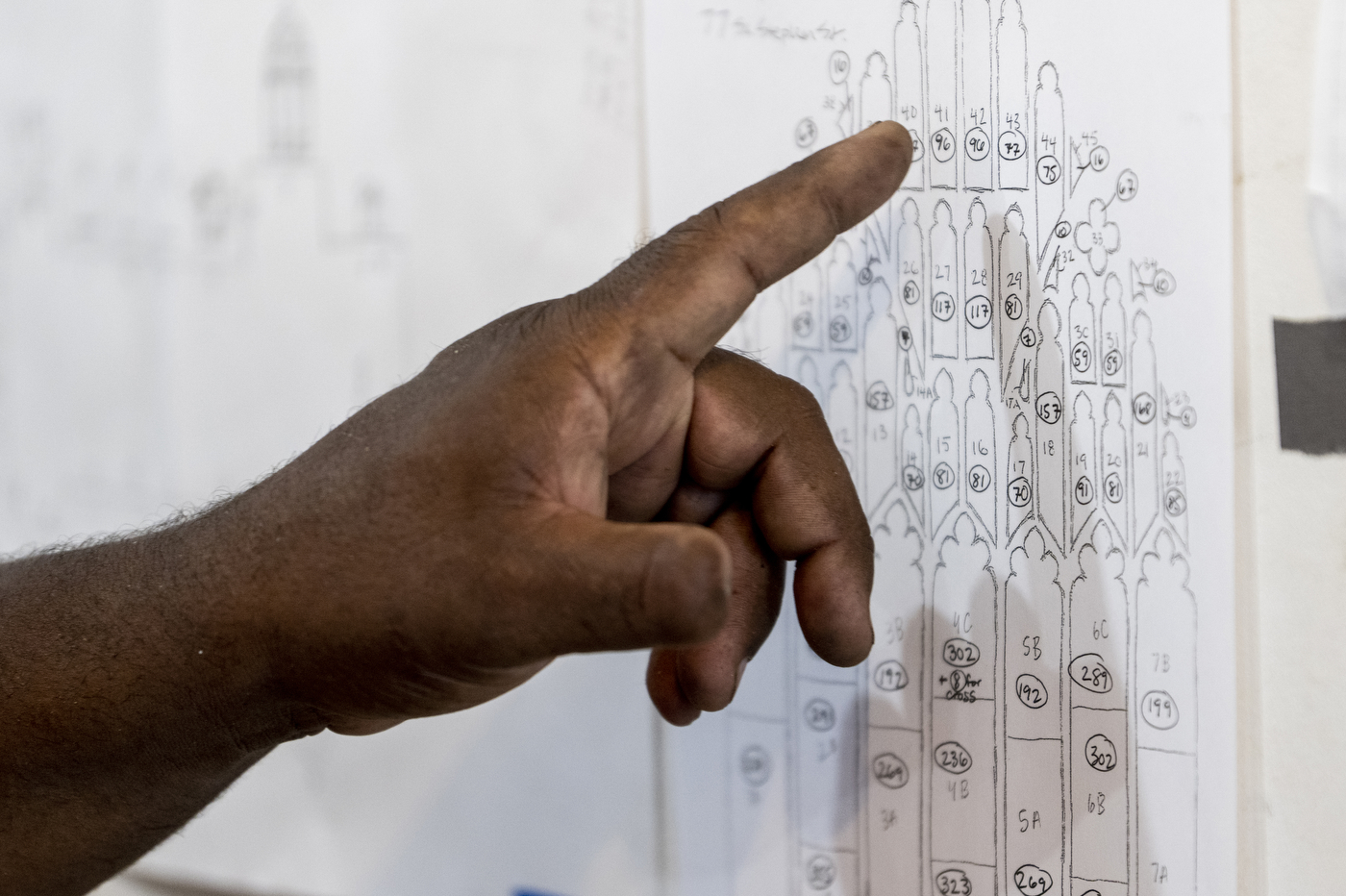
The team decided to leave some sections of the window unrestored because of their historical value in the stained glass world.
To put the puzzle back together afterward, Cruse rubbed each pane to get an impression. They have also numbered every pane and every piece of glass and created a diagram to put the window back together as it was.
The repairs are all done by hand and are extremely time-intensive, Hovey says. As the windows were made more than a 100 years ago, some of the glass became milky and hard to see through.
The glass pieces will be all carefully cleaned and mended with epoxy, when necessary. The weak lead cames will be repaired or replaced.
The studio will shield the original window from the elements with a layer of clear polycarbonate.
“These are your babies, we have to take care of them,” Hovey says.
The restoration of the window will take about a year. It will be reinstalled during the summer break.
“The Hovey Studio has done a very good job so far,” Ake says.
He already sees a dramatic difference in the light quality before and after the restoration of the window above the entrance.
“The space was a lot darker before, and required using artificial light most of the time,” Ake says. “I suspect once we have the big altar window restored and put back in place next summer, the light quality will just continue to improve.”
For media inquiries, please contact media@northeastern.edu.






